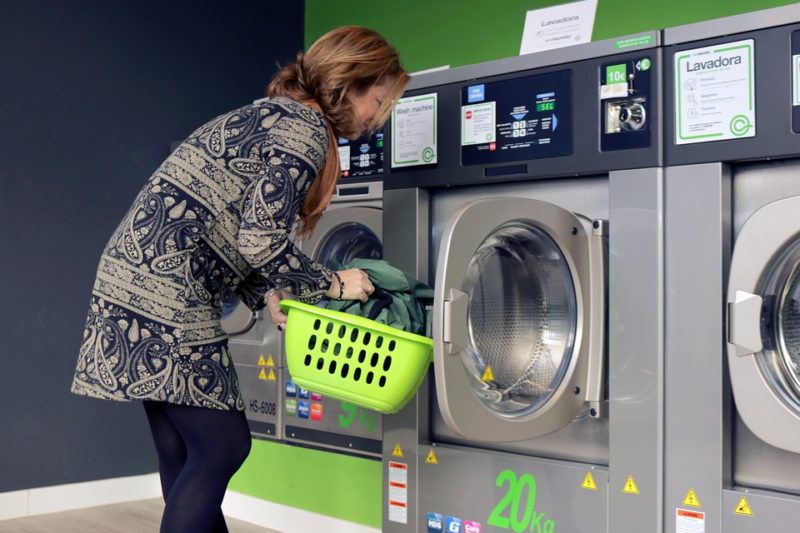Are you wondering how to test washer motor? There are five easy ways, which we will be discussing as you delve into this article further.
Yes, indeed, failing to start, overheating, or making strange noises while in use are all signs that a washing machine’s motor is beginning to exhibit signs of deterioration from use, but this is rare.
That’s why you should inspect your washing machine if you see these symptoms. There are several reasons why your washing machine may be malfunctioning. First, a series of tests on your motor’s circuits will be necessary to determine if this is the problem. Second, you can conduct routine washing machine maintenance after the problem has been detected.
If you are familiar with the operation of your washing machine and have access to some essential tools, you may do a self-test on the motor. A digital multimeter, for example, is a low-cost, handheld diagnostic equipment that can measure a wide range of electrical properties. Because it provides more accurate readings, a digital multimeter is preferable over an analog one. The good news is that an easy-to-follow instruction manual for using a multimeter to inspect a washing machine’s motor is provided just for you!
Steps To Test Washer Motor
So, how to test washer motor? Here are the followings steps that you should take:
Step #1. To begin, turn on the washer’s motor
The thing is that You can operate the DC or AC power through a universal motor, and this is a kind of electric motor that is ideal for both mentioned. Much more, electromagnetic energy serves as a stator, thereby creating a magnetic field. A commutator links the stator’s field coils with the rotor’s windings in a series-wound motor.
An AC series motor is the most popular name for this type of motor. Unlike DC series motors, universal motors may run on both DC and AC currents. Therefore, the field coils and armature, together with their respective magnetic fields, of this electric motor may work well on AC due to the synchronized alternating current in both with the supply voltage. Whatever voltage is used, the polarity of the commutator and the field coils will always decide the rotation’s direction.
Step #2. Motor brush of your washing machine
An electrical current can travel between two moving objects using a brush, often known as a carbon brush or a fixed wire. For example, many different types of electric devices employ this method, including motors, generators, and alternators. Depending on the model, specific generators and electric motors require the rotor’s coils to be linked in order to function. As a result, they forced braided copper wire against the shaft by springs and a commutator made of brass or copper.
The thing is that the washer contains brushes on the conductive rings. Commutation was hampered by the use of brushes that moved back and forth over the commutator. As a result, “high resistance brushes” based on graphite were developed, and sometimes this appears with added copper. There was still plenty of resistance to allow a smooth transition from one commutator segment to the next, even if it was just a few hundred milliohms. A lot of people disagree on whether or not they should even use the term “brush.” Brushes need to be replaced since they wear out and may be replaced in maintenance-friendly items.
Now, check for any damage to the carbon brushes in the washing machine’s motor; these are the only parts exposed to regular wear and tear and might break or be damaged.
Step #3. Changing the speed of the washing machine
By utilizing a simple potentiometer to adjust the speed of a washing machine’s motor, you may easily change its speed. In order to encode digital (discrete/binary) data, a modulation technique called pulse-duration modulation (PDM) or pulse-width modulation (PWM) can be utilized. Inertial loads, such as motors, can be controlled with this modulation approach, which can encode data for transmission. For example, solar battery chargers use PWM and maximum power tracking as two of the most common methods. Know about washing machine spin speed.
Step #4. Wire a washing machine motor controller
If you can’t find a better solution, use a light dimmer. This circuit can control several machines, including a lathe, jigsaw, circular saw, motorized cart or bike, or wood splitter. And yes, you can apply this to 10000 to 13000 revolutions per minute.
Step #5. Connect washing machine motor
A 120/220-volt washing machine motor can be connected using this method. To begin spinning at full speed as soon as a washing machine motor is connected in, a direct drive wiring design uses the mains power supply directly.
It’s A Wrap!
Your washing machine’s pump and drum are both powered by an electric motor. The machine will stop working if the motor fails. Your washing machine may not be working because the motor is faulty. In a washing machine, there are a lot of things that can cause the same occurrences. But, a circuit tester is the only way to discover if your motor is broken. Well, anyway, you’ve already known how to test washer motor. So, until here, my friends! You may also want to read about how to use bleach in the washer and how to level a washer.

